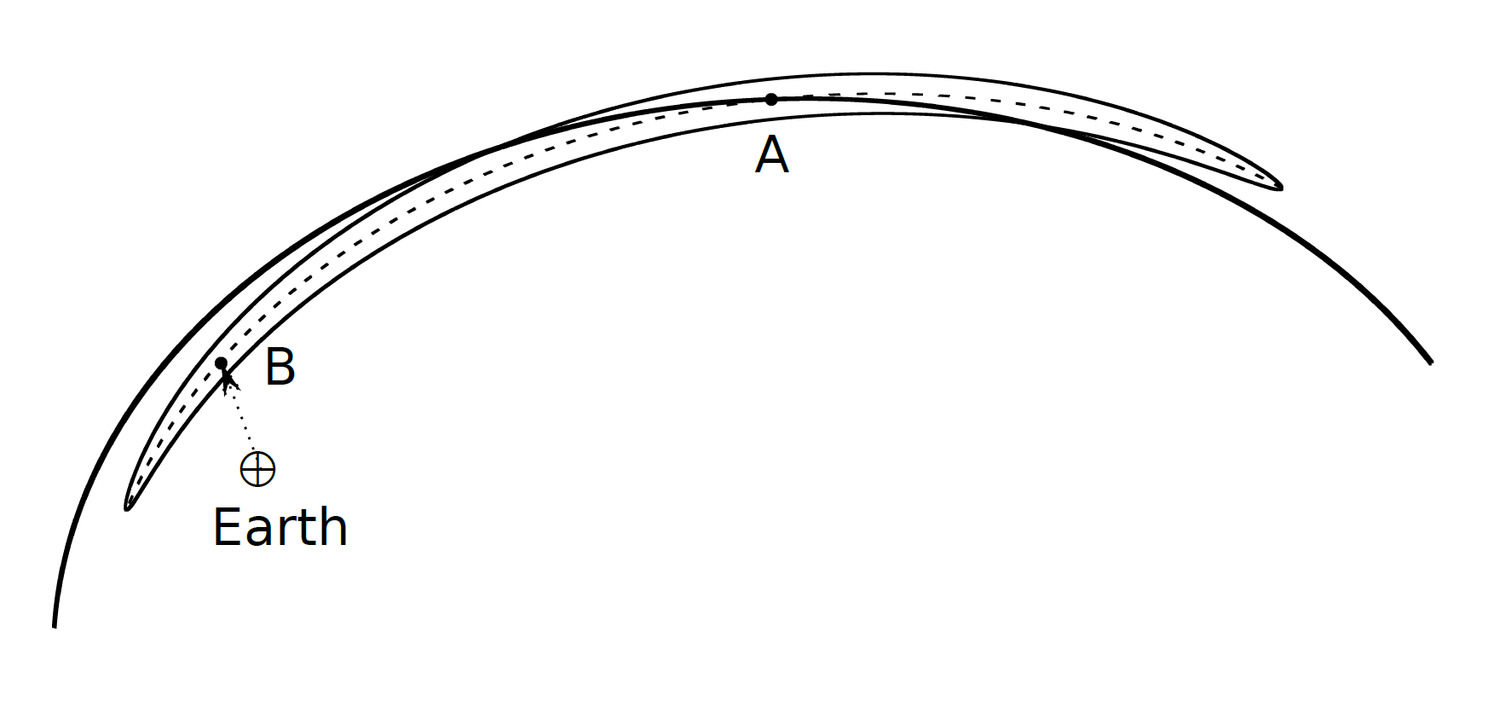NEOForCE: Impact monitoring system of Paris observatory
- Observatoire de Paris, IMCCE, Paris, France (dmitrii.vavilov@obspm.fr)
Introduction
Estimating the probability of a collision of asteroids with the Earth is an important task for planetary defense. There are systems that compute impact probabilities of near-Earth asteroids with the Earth on a regular basis: Sentry (Nasa, Jet Propulsion Laboratory) and CLOMON-2 (originally University of Pisa, now ESA). Here we present NEOForCE (Near-Earth Objects Forecast for Collisional Events) a new impact monitoring system which is being developed at Institut de mécanique céleste et de calcul des éphémérides (IMCCE, Paris Observatory).
Partial Banana Mapping method
The core of the new system is the Partial Banana Mapping method (PBM) [1] with the extension of a direct search for initial state vector that leads to a collision [2]. The basic principle of the Partial Banana Mapping method (PBM) is that the covariance matrix in curvilinear coordinate system, as described in [3] or in orbital elements much better represent the actual shape of the uncertainty region (see Fig.1) in the two-body formalism. To find the possible collision we can find on the main axis of the curvilinear uncertainty region the point, which is closest to the Earth (point B). In the extension of the PBM method we then are finding a state vector from the original uncertainty region (at epoch of observations) that leads to point B. Then we propagate the orbit of the found state vector until the time of possible collision and compute its probability. This approach can successfully find the virtual asteroid that leads to a collision.

Figure 1: The scheme of the banana shaped uncertainty region of the asteroid. Point A is the nominal position of the asteroid, point B — the virtual asteroid of the main axis of the uncertainty region, which is closest to the Earth. The bold line is the nominal asteroid’s orbit. The dashed arrow is the direction of the Earth’s relative velocity.
Line Of Variations approach
If the asteroid has close approaches with major planets then the linear analysis of collisions (like Partial Banana Mapping) can fail and nonlinear analysis is required. In NEOForCE we apply the concept of Line of Variations sampling to deal with it.
The uncertainty region of an asteroid at the epoch of observations is quite small and well represented by an ellipsoid (6 dimensional ellipsoid, since we have uncertainty in coordinates and velocities). The idea of Line of Variations approach [5,6] is to sample virtual asteroid on the main axis of this 6-dimensional uncertainty ellipsoid and integrate their orbits forward in time separately.
In NEOForCE each of the virtual asteroid is considered to be a representative of its vicinity of the uncertainty region (see Fig.2). The vicinity is found by dividing the largest eigen value of the covariance matrix that represents the uncertainty of the orbit. Then we proceed the analysis by the improved Partial Banana Mapping approach for each of the virtual asteroid.

Fig. 2. The schematic illustration of the uncertainty region at the epoch of observations. The horizontal line is the main line of the uncertainty ellipsoid (Line of Variations) and the black dots are the virtual asteroids. The green area is the vicinity of virtual asteroid that it represents.
Conclusion
The NEOForCE monitoring system will be using orbits of asteroids from DynAstVO database [6] and planetary ephemerids INPOP [7] from Institut de mécanique céleste et de calcul des éphémérides (IMCCE, Paris Observatory). The system has original approach of collisional analysis based on Partial Banana Mapping method. Hence the system provides an independent assessment of the impact probability, which is crucial for planetary defense campaign.
Acknowledgments
This project has received funding from the European Union’s Horizon 2020 research and innovation programme under the Marie Skłodowska-Curie grant agreement No 101068341 “NEOForCE”.
References:
[1] D. E. Vavilov (2020) MNRAS 492(3), 4546.
[2] D. E. Vavilov (2023) in Planetary Defense Conference 2023.
[3] D. E.Vavilov, et al. (2015) MNRAS 446(1),705.
[4] A. Milani, et al. (2002) Asteroid Close Approaches: Analysis and Potential Impact Detection 55–69.
[5] A. Milani, et al. (2005) Icarus 173(2),362.
[6] J. Desmars, et al. (2017) in European Planetary Science Congress EPSC2017–324.
[7] A. Fienga, et al. (2021) Notes Scientifiques et Techniques de l’Institut de Mecanique Celeste 110.
How to cite: Vavilov, D. and Hestroffer, D.: NEOForCE: Impact monitoring system of Paris observatory, Europlanet Science Congress 2024, Berlin, Germany, 8–13 Sep 2024, EPSC2024-544, https://doi.org/10.5194/epsc2024-544, 2024.